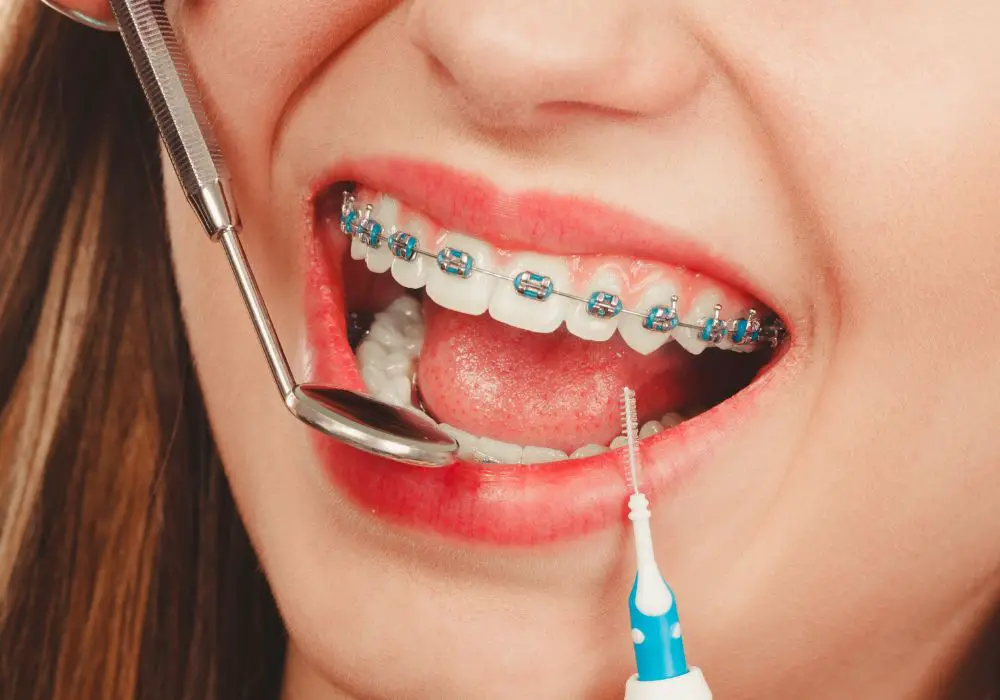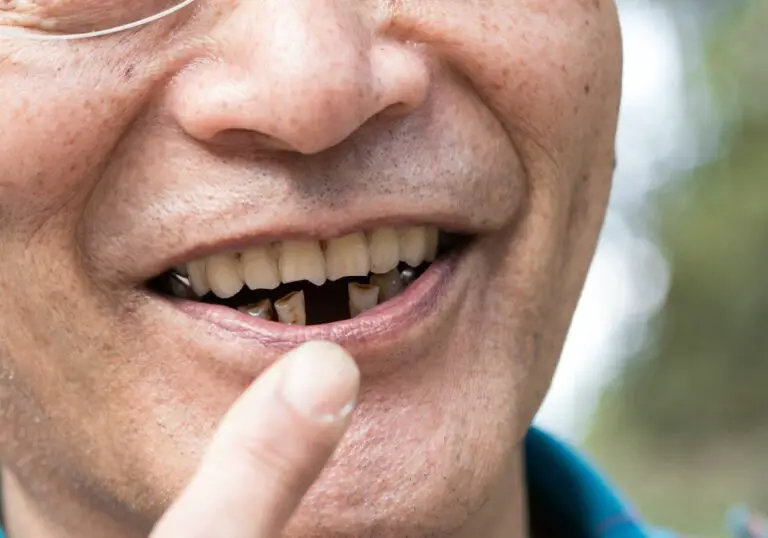Braces are a common orthodontic treatment used to straighten teeth and correct bites. Many people wonder if braces can actually straighten their teeth in just 3 months. The short answer is that while it may be possible in some cases, for most people it will take longer than 3 months for braces to straighten teeth completely. In this comprehensive article, we’ll take an in-depth look at how braces work, the detailed factors that affect treatment time, whether 3 months is a realistic timeline, and options for faster teeth straightening.
How Do Braces Slowly Straighten Teeth?

Braces apply gentle pressure to teeth over an extended period of time to incrementally shift them into alignment. This gradual process works by:
- Putting precise amounts of pressure on specific teeth to push or pull them in the desired direction.
- Holding teeth in their new position while the bone and tissues around them remodel to support the teeth’s new alignment.
- Using orthodontic wires to connect all the teeth and coordinate movement across the mouth.
On each tooth, small metal or ceramic brackets are bonded, and an archwire is threaded through each bracket slot. The orthodontist can insert different shaped wires and tighten them over time, creating tension that pulls on teeth strategically based on their intended path of motion.
This archwire/bracket system allows for precise control and distribution of forces to multiple teeth simultaneously. The continuous light pressure causes the teeth, gums, jaw joint and jawbone to gradually adapt around the shifting teeth.
As teeth move, the bone breaks down and rebuilds around the tooth’s roots, stabilizing them in each new position. This process of bone remodeling allows for permanent retention of the teeth after braces.
Detailed Factors That Affect Braces Treatment Time
Many variables influence how rapidly braces can straighten teeth. The major factors include:
Type and Severity of Malocclusion
- Crowding – Teeth are shifted due to insufficient space in the jaws. Mild to moderate crowding often requires 12-24 months with braces. Severe crowding can take 18-30 months.
- Spacing – Excess space between some teeth. Braces close gaps relatively quickly within 6-18 months depending on spacing severity.
- Crossbites – Upper and lower teeth meet in abnormal positions. Takes 12-18 months to correct depending on complexity.
- Overjet/Overbite – Protruding upper front teeth or excess overbite. Can extend treatment to 24-30 months in severe cases.
- Impacted teeth – Teeth obstructed from erupting properly. Resolving their positioning adds substantial time.
The more intricate the orthodontic problem, the longer braces will need to fully correct it. Simple issues may finish faster.
Type of Orthodontic Appliance
- Traditional braces – Most common. Allows for greatest control over tooth movements.
- Clear aligners (Invisalign) – Can treat some less complex cases faster, but not all malocclusions.
- Lingual braces – Brackets bonded behind teeth. Can be slower and more difficult to adjust.
- Ceramic braces – Less noticeable but may prolong treatment compared to metal.
Age of Patient
- Children/Teens – Rapid growth makes bone/teeth more pliable and adaptive to braces forces. Results in 6-24 months.
- Adults – Slower cell turnover and bone remodeling. May require up to 36 months of braces, especially for difficult cases.
Oral Health and Cooperation
- Excellent oral hygiene – Ensures gums/teeth remain healthy during orthodontic changes. Aids progress.
- Keeping appointments and avoiding broken braces – Allows for regular adjustments to maintain force on teeth.
- Wearing elastics or headgear as directed – Important supplemental devices that facilitate optimal tooth movements.
- Issues like poor hygiene or missed appointments add months to treatment time.
Is 3 Months a Realistic Timeline for Completely Straight Teeth?

While noticeable improvements are likely within 3 months, completely straightening teeth for most people will exceed this short timeframe. Here are the key reasons:
- On average, teeth only move approximately 1 millimeter per month with braces. Even moderate alignment changes of 3-5 mm require several months at this pace.
- Comprehensive correction involves precise coordination of multiple teeth across the entire mouth. This includes exact positioning of front and back teeth for an ideal bite and smile. This full process extends well beyond 3 months.
- After repositioning teeth, adequate retention time is crucial to allow bones and tissues to remodel around the teeth in their new alignment. This stabilizes the teeth in position. Insufficient retention time risks teeth shifting back towards their original position later. Most cases require 6-12 months of nighttime retainers following braces.
However, minor issues such as slight front teeth crowding or small tooth rotations may begin improving sooner:
- If only one or two teeth are mildly out of alignment, braces may correct their positioning within a couple months.
- The front 6 teeth may visually appear straightened faster than the full mouth. But long-term stability still requires extended retention.
- Retreatment cases of teeth that have relapsed after a previous round of orthodontics sometimes respond quicker.
But for lasting results, braces need to remain on for the full prescription treatment time of 12-24 months for adults and 18-30 months for more difficult teen cases.
Typical Braces Treatment Timeline From Start to Finish
While each patient’s treatment is customized, here is the general braces timeline from initial appointment to the removal of braces:
| Stage | Timeframe | Changes | Notes |
|---|---|---|---|
| Orthodontic Records | 1-2 months | None | Diagnostic records taken – photos, xrays, impressions |
| Braces Placement | 1 Appointment | Brackets bonded, initial wires | Fitted for elastics or headgear if needed |
| Early Treatment | 1-4 months | First subtle tooth movements | Appointments every 4-6 weeks for tightening |
| Mid Treatment | 6-12 months | Moderate improvement in alignment | Appointments every 6-8 weeks |
| Late Treatment | 12-24 months | Final precision adjustments | Appointments every 8-12 weeks |
| Retention | Several months | Teeth held in final position | Removable retainers initially, then nightly |
As shown, complete treatment typically spans 18-24 months for adults and children/teens with comprehensive issues. The first 3 months shows minor improvement with much slower incremental alignment changes in the following months. With an ideal treatment plan and patient compliance, straighter teeth are an achievable long-term goal.
Scenarios Where Teeth Could Straighten Considerably in 3 Months

While full correction takes longer, some situations where braces may significantly improve tooth alignment within approximately 3 months include:
Mild Crowding or Gaps:
If only 1-2 teeth are mildly crowded or spaced, braces can often shift them into better alignment quickly. Retention is still needed.
Slight Front Teeth Crookedness:
The front 4-6 teeth on top or bottom can sometimes straighten noticeably faster than the full set of teeth.
Children/Teens with Mixed Dentition:
Braces can align the combination of baby and permanent teeth reasonably well within a couple months for kids. But a second phase of treatment is likely needed later.
As Part of Two-Phase Treatment:
An initial brief phase of braces during childhood can align teeth fairly well within 3-6 months. A second longer phase in the teens further improves results.
However, retainers are typically prescribed for at least 6-12 months following these short treatments to help maintain the corrections.
Options That Can Accelerate Teeth Straightening:
While braces are unlikely to fully straighten teeth in only 3 months, there are options that may help accelerate the process:
- Clear aligners like Invisalign involve changing aligner trays out weekly or biweekly to move teeth incrementally. May shorten treatment compared to braces for select cases.
- Propel uses a device to micro-vibrate the bones around teeth, which helps teeth move faster through bone. It’s used with braces or Invisalign.
- AcceleDent is a similar supplemental vibrational device worn daily to accelerate orthodontic tooth movements.
- Frequent wire changes with braces (every 4-6 weeks) produces faster incremental tooth movements compared to less frequent adjustments.
- Selective extractions to create space can resolve crowding faster. But extractions require healing time before treatment can progress.
However, comprehensive treatment time with any of these remains around 12-18 months on average for adults and 18-30 months for more complex teen cases. These accelerated approaches may help shorten treatment, but not down to only 3 months for full correction.
Importance of Finishing Full Braces Treatment
If braces are removed earlier than the prescribed treatment length, the risks include:
- Teeth shifting back towards their original positions
- Incomplete correction of bite alignment issues
- A need for indefinite retention using removable or fixed retainers
Although a few months of braces makes teeth look better, stopping treatment prematurely increases the chances of teeth regressing or other problems arising. Completing the orthodontist’s intended treatment plan is crucial for straight, stable long-term results.
Conclusion: Can Teeth be Straightened in 3 Months?

Realistically, braces are unlikely to fully straighten most people’s teeth in only 3 months. However, mild improvements may be noticeable. More significant correction usually takes a minimum of 12-18 months. Accelerated options exist to shorten treatment time, but teeth straightened too rapidly are prone to relapse.
Working with an orthodontist to follow a customized, comprehensive treatment plan is important for straightening teeth efficiently while still allowing adequate time for proper bone remodeling and retention. With realistic expectations, using braces properly can transform your smile!
Frequently Asked Questions
How soon until I see noticeable changes with braces?
Subtle improvements in tooth alignment and bite should become noticeable within the first 1-3 months with braces. Changes occur gradually, but become more obvious by 6 months. Full correction takes 12-24 months.
Can braces work faster for teens than adults?
Yes, braces typically work faster for teens and children than adults. Teens’ growing bones and teeth respond more rapidly to braces forces. Adults over 40 have slower cell turnover, requiring extended treatment time. But braces remain effective at any age.
Will getting teeth pulled allow faster treatment?
Possibly. Extractions can help create space to resolve severe crowding which may shorten overall treatment time. But extractions require additional months for healing before progressing with braces. An orthodontist determines if extractions would benefit any individual treatment plan.
Can I get braces off sooner if teeth look straight?
No, braces should stay on for the full prescribed treatment length even if teeth look straight. They may look aligned but still be unstable and relapse if braces are removed too soon. It’s important to complete the intended treatment plan to ensure teeth stay properly aligned long term.
What are realistic expectations for braces timelines?
For mild issues, teeth can improve noticeably in 3-6 months but will likely require 12+ months of retention. Moderate cases often take around 18 months. Severe malocclusions may need 24 months or longer. Completing the full orthodontic treatment is key for lasting results.







